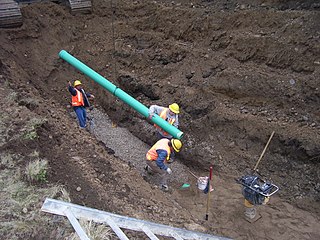
Azángaro Province is a province of the Puno Region in Peru.
Muñani District is one of fifteen districts of the Azángaro Province in Peru.
Potoni District is one of fifteen districts of the Azángaro Province in Peru.

Millo is a mountain in the Vilcanota mountain range in the Andes of Peru, about 5,500 metres (18,045 ft) high. It is situated in the Cusco Region, Canchis Province, Checacupe District, and in the Puno Region, Carabaya Province, Corani District. Millo lies northwest of the large glaciated area of Quelccaya and west of Unollocsina.

Qullqi is a mountain in the Andes in southern Peru, about 4,916.1 metres (16,129 ft) high. It is situated in the Puno Region, Lampa Province, Pucará District.

Llallawa is a mountain in the Andes of southern Peru, about 5,000 metres (16,404 ft) high. It is situated in the Puno Region, El Collao Province, Capazo District, and in the Chucuito Province, Pisacoma District.

Sayrecucho is a mountain in the Vilcanota mountain range in the Andes of Peru, about 5,200 metres (17,060 ft) high. It is situated in the Cusco Region, Canchis Province, Checacupe District, and in the Puno Region, Carabaya Province, Corani District. Sayrecucho lies southeast of the mountains Otoroncane and Huancane Apacheta, northwest of Culi and north of Tutallipina. The river Huancane originates north of Sayrecucho. Its waters flow to the Vilcanota River.

Tarucani is a mountain in the Vilcanota mountain range in the Andes of Peru, about 5,000 metres (16,404 ft) high. It is situated in the Puno Region, Carabaya Province, Corani District, west of Corani (Qurani). Tarucani lies southeast of the mountain Jachatira east of the large glaciated area of Quelccaya.

Chuqi Pirwa is a mountain in the Andes of Peru, about 5,200 m (17,100 ft) high. It is situated in the Cusco Region, Espinar Province, Condoroma District, and in the Puno Region, Lampa Province, Ocuviri District. Chuqi Pirwa lies southwest of Sawanani Lake (Saguanani) and northwest of Qullqi Q'awa.

Qiwña Milluku is a mountain in the Andes of Peru, about 5,200 metres (17,060 ft) high. It is situated in the Moquegua Region, Mariscal Nieto Province, Carumas District, and in the Puno Region, El Collao Province, Santa Rosa District. It lies northeast of the mountain Jach'a K'uchu.

Qurini is a mountain in the Peruvian Andes, about 5,400 metres (17,717 ft) high. It is situated in the Moquegua Region, Mariscal Nieto Province, Carumas District, and in the Puno Region, Puno Province, Acora District. Qurini lies northwest of the mountain Wilaquta and north of the lake Aqhuyach'alla.

Hatun Qurini is a mountain in the Peruvian Andes, about 5,000 metres (16,404 ft) high. It is situated in the Puno Region, Azángaro Province, San José District. Hatun Qurini lies northwest of the mountain Surupana.

Yuraq Apachita is a mountain in the Peruvian Andes, about 4,800 metres (15,748 ft) high. It is located in the Puno Region, Azángaro Province, San Antón District. Yuraq Apachita lies southwest of the mountain Ichhu Muruq'u and northeast of Hatun Anta. It is situated at the river Tawqani (Taucane).

Ch'iyar Jaqhi is a mountain in the Peruvian Andes, about 4,600 metres (15,092 ft) high. It is located in the Puno Region, Azángaro Province, on the border of the districts Potoni and San Antón. Ch'iyar Jaqhi lies northwest of the mountain Uqi Apachita and east of Ichhu Muruq'u.

Q'atawi Qullu is a mountain in the Peruvian Andes, about 4,600 metres (15,092 ft) high. It is located in the Puno Region, Azángaro Province, at the border of the districts Potoni and San Antón.

Uqi Apachita is a mountain in the Peruvian Andes, about 4,800 metres (15,748 ft) high. It is located in the Puno Region, Azángaro Province, on the border of the districts Muñani and San Antón. Uqi Apachita lies northeast of the mountain Yuraq Apachita and southeast of Ichhu Muruq'u and Ch'iyar Jaqhi.

Chamacane is a mountain in the Peruvian Andes, about 4,800 metres (15,748 ft) high. It is located in the Puno Region, Azángaro Province, on the border of the districts Muñani and San Antón. It lies northwest of the mountain Surupana and south of Alcamarine.

Suri is a mountain in the Andes of southern Peru, about 5,400 metres (17,717 ft) high. It is situated in the Puno Region, El Collao Province, Santa Rosa District. Suri lies northeast of the lake Wilaquta and the mountain Chinchillani.

Taruja Marka or Taruka Marka is a mountain in the La Raya mountain range in the Andes of Peru, about 5,000 metres (16,404 ft) high. It is situated in the Puno Region, Melgar Province, on the border of the districts of Nuñoa and Santa Rosa. Taruja Marka lies near the La Raya pass, northwest of the mountain Yanaqucha and northeast of Chimpulla.

Wila Quta is a mountain in the Wansu mountain range in the Andes of Peru, about 5,100 metres (16,732 ft) high. It is situated in the Apurímac Region, Antabamba Province, Antabamba District, and in the Arequipa Region, La Unión Province, Huaynacotas District. Wila Quta lies west of Taruja Marka and Allqa Walusa and southeast of Wallqa Wallqa.







